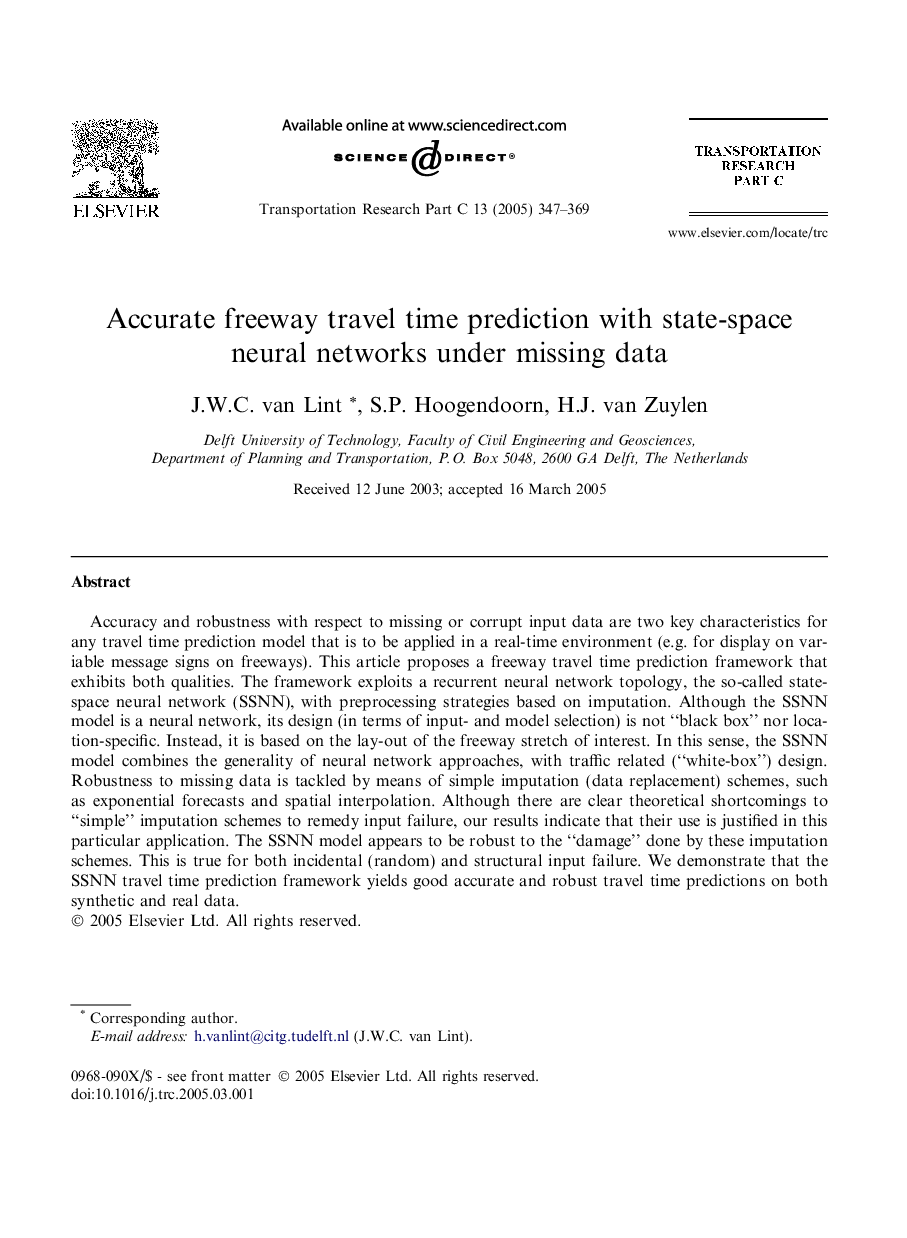| Article ID | Journal | Published Year | Pages | File Type |
|---|---|---|---|---|
| 9669506 | Transportation Research Part C: Emerging Technologies | 2005 | 23 Pages |
Abstract
Accuracy and robustness with respect to missing or corrupt input data are two key characteristics for any travel time prediction model that is to be applied in a real-time environment (e.g. for display on variable message signs on freeways). This article proposes a freeway travel time prediction framework that exhibits both qualities. The framework exploits a recurrent neural network topology, the so-called state-space neural network (SSNN), with preprocessing strategies based on imputation. Although the SSNN model is a neural network, its design (in terms of input- and model selection) is not “black box” nor location-specific. Instead, it is based on the lay-out of the freeway stretch of interest. In this sense, the SSNN model combines the generality of neural network approaches, with traffic related (“white-box”) design. Robustness to missing data is tackled by means of simple imputation (data replacement) schemes, such as exponential forecasts and spatial interpolation. Although there are clear theoretical shortcomings to “simple” imputation schemes to remedy input failure, our results indicate that their use is justified in this particular application. The SSNN model appears to be robust to the “damage” done by these imputation schemes. This is true for both incidental (random) and structural input failure. We demonstrate that the SSNN travel time prediction framework yields good accurate and robust travel time predictions on both synthetic and real data.
Keywords
Related Topics
Physical Sciences and Engineering
Computer Science
Computer Science Applications
Authors
J.W.C. van Lint, S.P. Hoogendoorn, H.J. van Zuylen,
